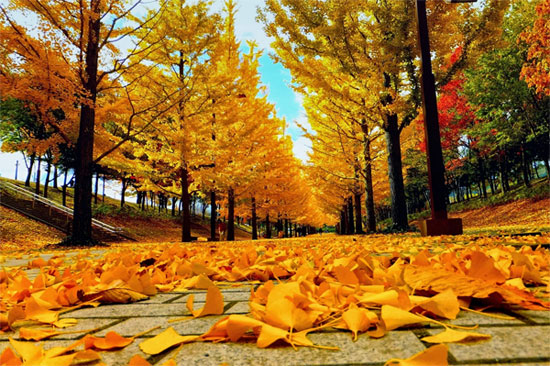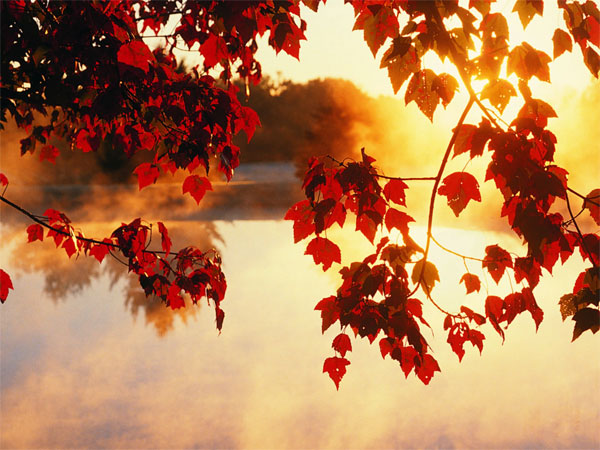Why does the autumn leaves change color?
Whether the winter has shimmering snowballs or the summer we can lie lazily on the beach, the fall may still be the most popular season.
Each year, humans are surprised when the leaves begin the magical color transformation process. In the northeastern United States, every year millions of people from all over the world come and observe nature's art collection.
The United States is not the exclusive place for this leaf-to-color business, but from Europe to Alaska, people are happy every year with the colorful gift of nature. People argue again and again about the color they love the most - is it bright yellow, fiery orange or vibrant red?

According to the legend that Native Americans recounted, the appearance of these wonderful colors came from the story: After the hunter killed the Big Bear in the sky, the blood of the Bear splashed to the earth. and turn the leaves into red. What about the yellow leaves? That's because the fat of the Bear shot out of the pot that was cooking the Bear.
If this explanation still does not answer your concerns about why the color changes, look for the answer of the scientists. Instead of talking to hunters, bears and fat, scientists talk about photosynthesis, pigmentation and sunshine .
Most of the time in a year, leaves are a part of feeding plants. Continuous leaves convert carbon dioxide, water and sunlight into energy during photosynthesis. The special ingredient in this process is chlorophyll pigments, which help the leaves to be green, bright in most of the year. But even though chlorophyll plays such an important role, in addition to chlorophyll, the plant has several forms of carotene and xanthophyll . Greek Xanthophyll is "yellow" , and carotene is yellow or orange pigments. These two pigments are always present in the leaves, helping to absorb sunlight, which translates into chlorophyll for photosynthesis.

When the summer is about to end and the day is short, the rising darkness instigates the tree to prepare for the hibernation period. Leaves will not be able to continue photosynthesis in the winter due to the dry and lack of sunlight, so the tree has to do two things. First, the tree forms a wall at each leaf to separate the leaves from the tree. After that, it stops producing chlorophyll because the plant will not need this pigment until next spring. When chlorophyll no longer exists, yellow and orange pigments have a chance to shine.
Red, derived from anthocyanin pigments , is a bit more complicated. Although plants contain chlorophyll, carotene and xanthophyll, not all plants produce anthocyanin pigments. Even anthocyanin trees produce it only under certain conditions.
Do you still remember the partition on each leaf ? The purpose of this wall is to protect trees in the cold winter and prevent the tree from drying out. When this wall layer appears, the leaves will fall to conserve energy for the plant. But before the leaves fall, the tree also wants lots of sugar and nutrients from the leaves, which are present with anthocyanin pigments.

Although scientists have given various reasons why some plants produce anthocyanin pigments and why leaves change color in the fall, the most prevalent explanation is now anthocyanin-protective pigments. Leaves off excess sunlight and allows plants to win the last remaining nutrients. The reason you see the leaves are more vivid red in a few years is because the years are sunny, more sunlight and drier weather, increasing the concentration of sugar in sap, so the tree must release many anthocyanins to gather energy to overcome the winter. In addition, when cold weather nears freezing, low nutrient levels and other plant stresses seem to increase anthocyanin levels.
If the weather is especially rainy and overcast, there will not be many red leaves. Without sunshine, plants do not need additional protection of anthocyanin red pigments, so plants do not produce anthocyanin.
If the fall where you live does not have leaves that change color, not "golden autumn" or "red autumn" , it is due to the weather. If you still want to watch the golden autumn, there is only a way to join the carnaval group to places "there are many golden autumns of incense", "there is a fall of the golden king" .
- Will climate change change the color of autumn?
- Explain the phenomenon of leaves changing color in autumn
- Mysterious deciphers' autumn leaves fall yellow
- Autumn leaves
- Discover the fall
- Why leaves are red in autumn
- Why do leaves change color?
- Why are autumn leaves in the United States and Europe different?
- Early fall in the Norwegian forest
- Why do leaves on the last fall?
- Lizard camouflage autumn leaves
- Splendid collection throughout the United States
 'Fine laughs' - Scary and painful torture in ancient times
'Fine laughs' - Scary and painful torture in ancient times The sequence of numbers 142857 of the Egyptian pyramids is known as the strangest number in the world - Why?
The sequence of numbers 142857 of the Egyptian pyramids is known as the strangest number in the world - Why? History of the iron
History of the iron What is alum?
What is alum?